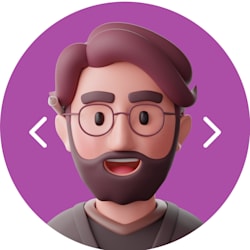

And we are also passing our Provider which is DataClass in an anonymous function. You see inside build method, we are using ChangeNotifierProvider. Provider class data_class.dart import 'package:flutter/cupertino.dart'

Icon(Icons.skip_previous, color:Color(0xFFfefeff)), MainAxisAlignment: MainAxisAlignment.spaceBetween, Get.to(()=>HomePage(), transition: Transition.downToUp, duration: Duration(seconds: 1)) Padding: const EdgeInsets.only(left: 20, right: 20), If(Provider.of(context, listen: false).x(context, listen: false).decrementX() Margin: const EdgeInsets.only(left: 40, right: 40), Consumer(builder: (context, data, child)', style: TextStyle( It helps you to show the changed data in the UI or View. You need to wrap your widget, using Consumer. In our class, we created a class named DataClass, and this class extends ChangeNotifier. Your class should extend ChangeNotifier, if you want to use Provider package in your app. Organization: decoupling business logic from view and presentation logic cannot get better than this.In general if you use Provider for State Management, you should use ChangeNotifierProvider to wrap your material app. Productivity: intuitive and efficient tool combined with simplicity and straightforward syntax that ultimately saves development time Performance: focused on minimum consumption of memory and resources Videos View the many videos on the Flutter YouTube channel. Cookbook Browse the cookbook for many easy Flutter recipes. API docs Bookmark the API reference docs for the Flutter framework. GetX has three basic principles on which it is built: Widgets catalog Dip into the rich set of Flutter widgets available in the SDK. It aims to deliver top-of-the-line development experience in an extra lightweight but powerful solution for Flutter.

On this page, we are going to be using the provider package. GetX is not only a state management library, but instead, it is a microframework combined with route management and dependency injection. The drug's principal indication is long-term suppression of dysrhythmias, including SVT, atrial flutter, atrial fibrillation, and sustained ventricular. Lifting state up Accessing the state ChangeNotifier ChangeNotifierProvider Consumer Provider.of Putting it all together Now that you know about declarative UI programming and the difference between ephemeral and app state, you are ready to learn about simple app state management. The only thing is, you need to have access to the BuildContext attached the widget tree. You can use Provider as a simple dependency injection container as well. The future provider has an initial value, which widgets can use until the Future value is resolved. Therefor, the main use-case of FutureProvider is to ensure that a null value isn't passed to any widgets. You can use both reactive and non-reactive ChangeNotifiers in a Widget which means that you can depend on other ChangeNotifiers without being notified about changes. In a nutshell, FutureProvider is used to provide a value that might not be ready by the time the widget tree is ready to use it's values. The documentation is clear and concise and provides guidelines to best practices as well. Its very easy to understand and reason about. There are many advantages of the Provider package specially when combined with ChangeNotifiers.


 0 kommentar(er)
0 kommentar(er)
